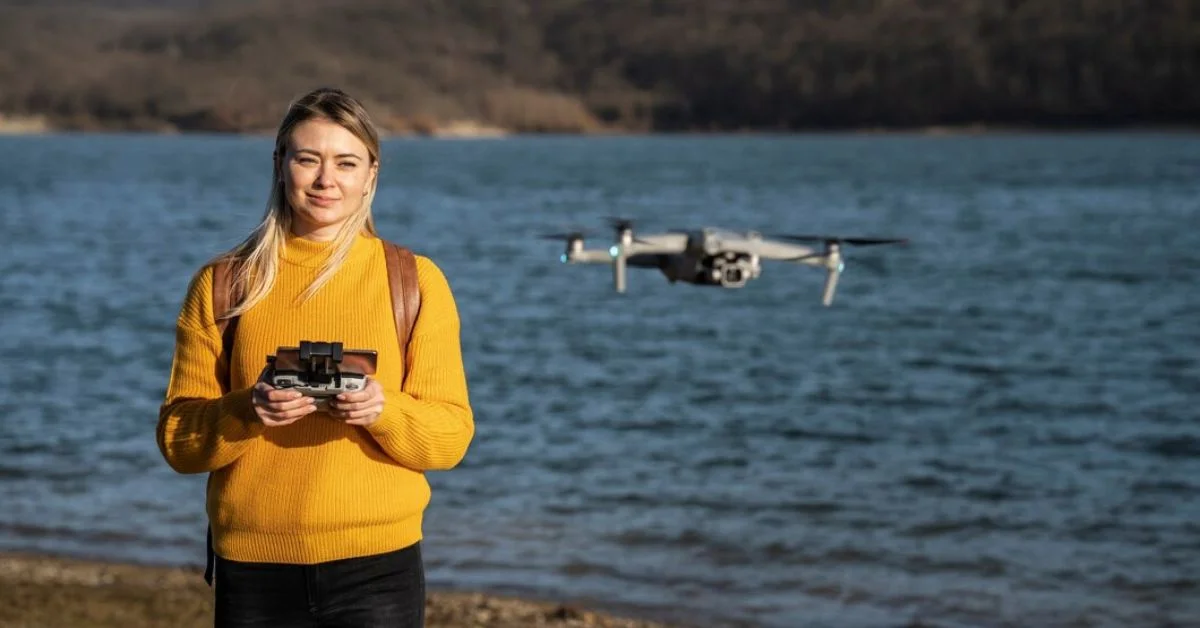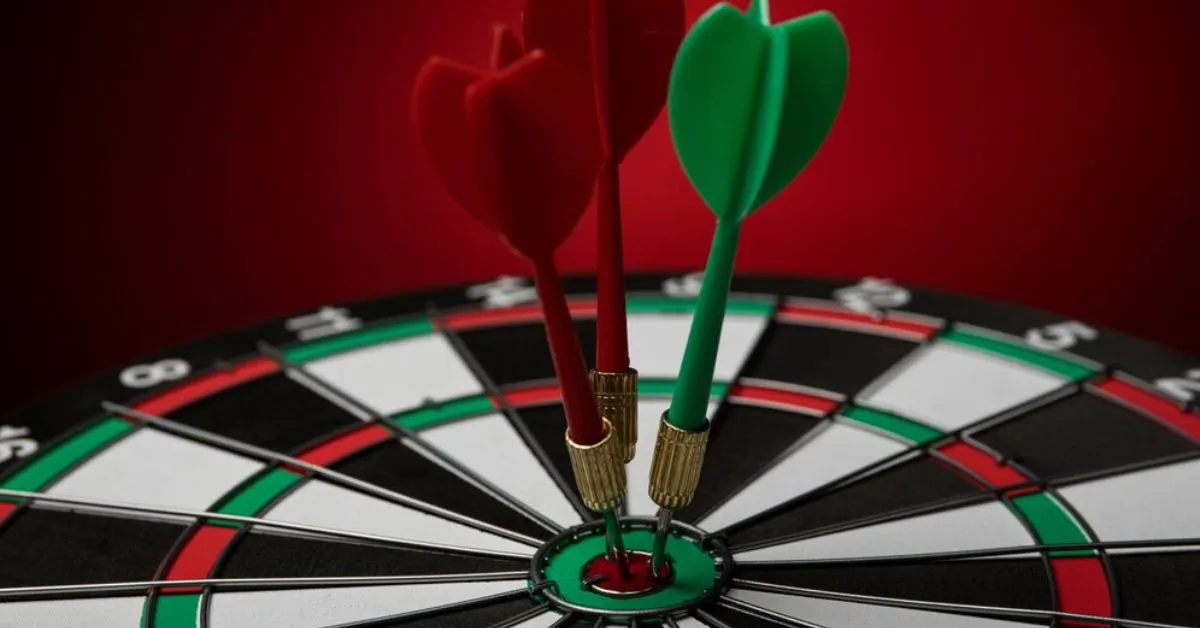TECHNOLOGY
Beyond Human Sight: Exploring the Advanced Cameras and Sensors on Today’s Drones

In drone technology, advanced cameras and sensors play pivotal roles. These components enhance the performance and capabilities of drones and ensure their safety in increasingly complex environments. This article delves into how these technologies are integrated into a modern Skydio X10 Drone, for instance and the benefits they provide across various applications.
Enhancing Visual Capabilities
High-Resolution Cameras for Aerial Photography and Videography
Modern drones are increasingly equipped with high-resolution cameras that capture detailed images and videos from the sky. This capability is particularly valuable in several professional fields. In real estate, these cameras create compelling aerial shots of properties, offering potential buyers a unique perspective that ground-level photography cannot provide. For filmmakers, drones with high-resolution cameras are indispensable tools for capturing cinematic shots that were once only possible with expensive crane equipment. Additionally, journalists utilize these cameras to capture footage from angles that add depth and context to stories, especially in areas that are difficult to access.
Thermal Imaging Cameras for Night Operations
Thermal imaging cameras on drones play a critical role in operations carried out in low visibility conditions, such as during the night or in foggy environments. These cameras detect heat, which is particularly useful in search and rescue missions where locating individuals in challenging conditions can be life-saving. Wildlife monitoring also benefits greatly from thermal imaging; researchers can observe nocturnal or heat-emitting animals without disturbing them, gaining insights into their natural behaviors and habitats. This technology ensures that drones can be effectively used in a variety of critical and sensitive tasks, enhancing their utility and operational scope.
Precision Navigation and Stability
Integrating various sensors such as gyroscopes, accelerometers, and magnetometers has transformed how drones navigate and stabilize themselves. These sensors provide critical data that helps drones maintain balance, determine orientation, and ensure smooth flight trajectories. Such precision is indispensable, particularly in environments where maneuvering through tight spaces is required, such as during indoor inspections or in natural disaster zones.
Obstacle Detection and Collision Avoidance
Obstacle detection sensors are fundamental to the autonomous capabilities of drones. Technologies like LiDAR (Light Detection and Ranging), ultrasonic, and infrared sensors enable drones to perceive and react to their surroundings in real time. This capability is vital for avoiding collisions, ensuring drone safety, and enhancing reliability in package delivery, infrastructure inspection, and agricultural monitoring.
Environmental Monitoring and Data Collection
Drones equipped with environmental sensors can measure air quality, detect changes in environmental conditions, and gather geospatial data. These applications are particularly beneficial in environmental science, where drones collect data from inaccessible areas, contributing to research on climate change and habitat preservation. The ability to quickly gather and analyze large volumes of data from the air has revolutionized data collection processes in several scientific fields.
Enhanced Communication Systems
Advanced communication systems in drones, including GPS and real-time data transmission capabilities, rely on robust sensor arrays to function correctly. These systems ensure that drones can operate over longer distances and transmit valuable data back to operators or automated systems without delay. Such features are crucial for maintaining control over drones during critical missions and for streaming live aerial footage for various purposes.
Industrial and Commercial Applications
In the industrial sector, drones with advanced cameras and sensors are increasingly used to inspect pipelines, wind turbines, and large structures. This reduces the risk to human inspectors and cuts down on maintenance time and costs. In agriculture, drones equipped with multispectral cameras help assess plant health, monitor crop stress, and optimize water usage, thereby enhancing crop management and yields.
Security and Surveillance
Security applications are significantly enhanced by a device like the Skydio X10 Drone with sophisticated imaging and sensor technologies. These drones can monitor large areas, provide real-time updates during emergencies, and act as deterrence to criminal activities. In events where safety and security are paramount, such as public gatherings and border surveillance, the aerial perspective provided by drones is invaluable.
Challenges and Future Directions
While the benefits are numerous, the integration of advanced cameras and sensors into drones comes with challenges. Privacy concerns, regulatory compliance, and airspace management are significant hurdles. Additionally, as technology advances, the need for improved data security and more sophisticated AI to process the vast amounts of data collected becomes apparent.
The scope of drone technology looks promising with the advent of AI and machine learning. These technologies are expected to enhance the autonomous capabilities of drones, allowing for more complex decision-making processes and adaptive behaviors in real-time operations. The integration of advanced cameras and sensors in drones has expanded their capabilities and opened new avenues for their application across various sectors. As technology progresses, the potential for drones to impact lives positively grows exponentially. The sophisticated sensory and imaging technologies onboard modern drones are truly taking us beyond human sight into a future where the sky is no longer the limit.
TECHNOLOGY
ShortEngine .com#: Your Hub for Quality Tech Insights

Introduction to ShortEngine. com#
In a world where technology evolves at lightning speed, staying updated can feel like an uphill battle. Enter ShortEngine.com#, your ultimate hub for quality tech insights. Whether you’re a seasoned tech enthusiast or just dipping your toes into the digital realm, this platform is designed to equip you with knowledge that matters. With in-depth articles, expert opinions, and community-driven discussions, ShortEngine.com# bridges the gap between complex concepts and accessible information. Get ready to dive deep into the fascinating universe of technology—because understanding it has never been more essential!
The Importance of Tech Insights in Today’s World
Technology permeates every facet of our lives. From the way we communicate to how businesses operate, tech shapes our reality. Staying informed about these changes is crucial.
Tech insights empower individuals and organizations alike. They help us navigate an ever-evolving landscape filled with new opportunities and challenges. Understanding trends can enhance decision-making processes, both personally and professionally.
Moreover, being aware of technological advancements fosters innovation. It encourages creative thinking and the adaptation of new solutions to existing problems.
In a world where information is abundant yet overwhelming, reliable tech insights provide clarity. They serve as a guiding light in complex situations, helping users discern what truly matters amidst noise.
Accessing quality information not only enhances knowledge but also builds confidence in making informed choices within this digital age.
What Makes ShortEngine. com# Stand Out?
ShortEngine.com# is not just another tech blog; it’s a vibrant hub for technology enthusiasts. The platform combines depth with accessibility, making complex topics easy to grasp.
One of its standout features is the commitment to quality content. Each article goes through rigorous vetting by experts in various fields, ensuring that readers receive reliable insights.
The user interface enhances the experience. It’s intuitively designed, allowing visitors to navigate effortlessly between categories and topics.
Additionally, ShortEngine.com# fosters community interaction. Readers can comment on articles and share their perspectives, creating a dynamic dialogue around each post.
This unique blend of high-quality information and community engagement sets ShortEngine.com# apart in the crowded digital landscape of tech resources.
ALSO READ: Geekzilla Podcast: Delving into the Marvels of Geek Culture
Categories Covered on ShortEngine. com#
ShortEngine.com# offers a diverse array of categories that cater to tech enthusiasts and professionals alike. Whether you’re interested in the latest gadgets or software trends, there’s something for everyone.
From comprehensive reviews of cutting-edge devices to insightful articles on artificial intelligence, each category is designed to inform and engage readers.
The platform also delves into cybersecurity, providing essential tips and updates on protecting your digital life. For those looking at the future of technology, sections dedicated to emerging technologies explore innovations shaping our world.
Additionally, ShortEngine.com# features content about gaming developments and industry news. This ensures gamers stay updated with everything from new releases to console upgrades.
Each category connects readers with valuable information tailored to their interests.
Expert Writers and Contributors
ShortEngine.com# takes pride in its diverse team of expert writers and contributors. Each individual brings a unique perspective and deep knowledge of technology trends.
Our contributors include seasoned tech journalists, industry veterans, and passionate enthusiasts. They are dedicated to delivering accurate information paired with insightful analysis.
With backgrounds ranging from software development to digital marketing, these experts ensure our content is both relevant and engaging. Their varied experiences enrich the articles, making them valuable resources for readers.
We also encourage collaboration among writers, fostering an environment where ideas flourish. This synergy allows us to tackle complex subjects in innovative ways.
Readers can trust that the insights shared on ShortEngine.com# come from credible sources who genuinely care about technology’s impact on society.
ALSO READ: Vy6ys: Revolutionizing Tech with AI and Analytics
User-Generated Content and Community Engagement
User-generated content is a powerful aspect of ShortEngine.com#. It empowers readers to share their insights and experiences. This creates an inclusive atmosphere where everyone can contribute.
Community engagement thrives here. Users are encouraged to comment, ask questions, and participate in discussions. This interaction fosters a sense of belonging and connection among tech enthusiasts.
Moreover, highlighting user contributions adds authenticity to the platform. Readers trust peer reviews and opinions more than traditional articles. By showcasing diverse perspectives, ShortEngine.com# enriches its content quality.
This approach not only enhances knowledge sharing but also drives innovation within the community. Creative ideas often emerge from these collaborations, sparking new conversations around technology trends.
The vibrant community at ShortEngine.com# ensures that every voice matters in shaping the discourse on emerging tech topics. As users engage with one another, they build relationships that extend beyond mere digital interactions.
Conclusion
ShortEngine.com# serves as a beacon for tech enthusiasts and professionals alike. By offering quality insights, it bridges the gap between complex technological concepts and everyday understanding. The platform not only boasts expert contributions but also encourages community engagement through user-generated content. This blend of professionalism and community input creates a rich tapestry of knowledge.
With its diverse categories, ShortEngine.com# ensures that there is something for everyone—from cutting-edge gadget reviews to deep dives into software trends. Users benefit from staying informed about the latest developments in technology while engaging with like-minded individuals.
Whether you are looking to enhance your tech literacy or simply stay updated with industry news, ShortEngine.com# is your go-to resource. Embrace the future of technology with confidence by exploring what this hub has to offer.
ALSO READ: About Blog/Turbogeekorg: Your Ultimate Guide
FAQs
What is “ShortEngine.com#”?
ShortEngine.com# is an innovative online platform that provides concise, high-quality tech content for professionals and enthusiasts, covering the latest trends and insights in technology.
What types of content can I find on ShortEngine.com#?
You can explore a variety of categories, including gadget reviews, software trends, artificial intelligence, cybersecurity tips, and gaming news.
How does ShortEngine.com#’s ensure content quality?
Each article undergoes rigorous vetting by experts in various tech fields, ensuring that the insights provided are reliable and well-researched.
Can users contribute to ShortEngine.com#’s?
Yes! ShortEngine.com#’s encourages user-generated content, allowing readers to share their insights and engage in discussions, fostering a vibrant community.
What sets ShortEngine.com# apart from other tech blogs?
The platform stands out for its commitment to quality content, user-friendly interface, and community engagement, making complex tech topics accessible to all.
APPS & SOFTWARE
Iganony: Revolutionizing Instagram Story Viewing for 2023

Are you tired of missing out on your favorite Instagram stories? Say goodbye to FOMO because Iganony is here to save the day! Dive into the world of seamless story viewing with the best tool in town. Let’s explore how Iganony can revolutionize your Instagram experience in 2024!
How does Iganony work?
Have you ever wondered how Iganony works its magic as the best Instagram story viewer tool in 2024? Let’s take a peek behind the curtain and unveil the mystery.
Iganony operates by utilizing advanced algorithms to access Instagram stories anonymously. By simply entering the username of the account you wish to view, Iganony swiftly retrieves all their latest stories for your viewing pleasure.
Once you input the username, Iganony navigates through Instagram’s security measures with finesse, ensuring that your anonymity remains intact throughout the viewing process. This seamless operation allows you to watch any public or private Instagram story without leaving a trace.
With just a few clicks, Iganony grants you access to a treasure trove of captivating content from your favorite accounts. Whether it’s celebrities, influencers, or friends, Iganony makes exploring Instagram stories effortless and enjoyable.
Features of Iganony
Iganony offers a range of impressive features that set it apart from other Instagram story viewer tools on the market. One standout feature is its user-friendly interface, making it easy for users to navigate and access the content they are interested in.
Another key feature of Iganony is its anonymity, allowing users to view Instagram stories without leaving any trace or notifications. This provides a discreet way to keep up with your favorite accounts without drawing attention to yourself.
Additionally, Iganony boasts fast loading times, ensuring that users can quickly and efficiently view Instagram stories without any delays. The tool also allows for seamless viewing of both public and private accounts’ stories, expanding the range of content available to users.
With features designed for convenience and privacy in mind, Iganony is a top choice for those looking to enhance their Instagram viewing experience.
ALSO READ: TSUMINO: WHERE CONTENT MEETS COMMUNITY
Why choose Iganony over other Instagram story viewer tools?
Looking for the best Instagram story viewer tool in 2024? Look no further than Iganony. With its user-friendly interface and advanced features, Iganony’s stands out from the crowd.
One key reason to choose Iganony’s over other tools is its unmatched reliability. Say goodbye to glitches or lagging – Iganony’s ensures a smooth viewing experience every time. Additionally, Iganony offers a wide range of customization options, allowing you to tailor your viewing preferences to suit your needs.
Moreover, Iganony’s prioritizes user privacy and security. Rest assured that your data is safe and protected while using this platform. Furthermore, with constant updates and improvements, Iganony’s stays ahead of the competition by providing cutting-edge features that enhance your overall experience.
Choose Iganony today and take your Instagram story viewing to the next level!
User testimonials and success stories
Imagine scrolling through countless Instagram Story viewer tools, feeling overwhelmed by options until you stumble upon Iganony. Users rave about their experience with Iganony, praising its user-friendly interface and swift results.
Many have shared how Iganony’s has helped them gain valuable insights into their competitors’ strategies, allowing them to stay ahead in the social media game.
Success stories flood in from influencers who credit Iganony’s for helping them track engagement metrics effectively and tailor their content to resonate with their audience better.
The seamless experience of using Iganony has left users impressed and eager to continue utilizing this powerful tool for maximizing their Instagram presence.
ALSO READ: TELTLK UNLEASHED: A PARADIGM SHIFT IN COMMUNICATION
Future plans for Iganony
Looking ahead, Iganony is committed to continuous improvement and innovation. The team behind this Instagram story viewer tool is dedicated to enhancing user experience by introducing new features and functionalities regularly.
One of the key future plans for Iganony includes expanding its compatibility with different devices and platforms to reach a wider audience globally. By ensuring seamless integration across various technologies, users can access Iganony’s conveniently from their preferred devices.
Moreover, the development team aims to strengthen data security measures to protect user privacy and information effectively. Implementing robust encryption protocols will provide users with peace of mind while using Iganony’s for viewing Instagram stories anonymously.
Additionally, there are plans in place to enhance the overall performance of the tool, making it faster and more responsive. By optimizing speed and efficiency, users can enjoy a smooth and hassle-free experience when using Iganony for accessing Instagram stories seamlessly.
Conclusion
Iganony stands out as the best Instagram story viewer tool in 2024. With its user-friendly interface, advanced features, and exceptional customer support, Iganony’s offers a seamless and enjoyable experience for users looking to view Instagram stories anonymously.
Whether you’re a social media enthusiast wanting to stay updated on your favorite accounts without leaving a trace or a business looking to gain valuable insights from competitors’ strategies, Iganony’s has got you covered. Its innovative approach sets it apart from other tools in the market, making it the top choice for individuals and businesses alike.
Try Iganony today and unlock a world of possibilities for viewing Instagram stories anonymously!
ALSO READ: EVERYTHING ABOUT ILIJECOMIX
FAQs
What is “Iganony”?
Iganony is a cutting-edge tool that allows users to view Instagram stories anonymously, ensuring privacy and seamless access to content.
How does Iganony‘s work?
Iganony’s uses advanced algorithms to access Instagram stories without revealing your identity. By entering the desired username, it retrieves stories discreetly.
What features does Iganony’s offer?
Iganony’s boasts a user-friendly interface, fast loading times, anonymous viewing, and the ability to access both public and private accounts’ stories.
Why choose Iganony’s over other tools?
Iganony’s stands out with its reliability, customization options, and strong focus on user privacy and security, ensuring a superior Instagram story viewing experience.
What are users saying about Iganony’s?
Users praise Iganony’s for its ease of use, swift results, and valuable insights. Influencers and businesses appreciate its role in enhancing their Instagram presence.
TECHNOLOGY
Oprekladač: A Guide to the Future of Technology

In a rapidly evolving world, technology is the heartbeat of progress. It shapes our daily lives and redefines industries. One such innovation making waves is Oprekladač. But what exactly is it? As we dive into this fascinating realm, we’ll explore how Oprekladač stands at the forefront of technological advancement. From its role in transforming communication to its impact across various sectors, Oprekladač holds promise for shaping our future in ways we have yet to imagine. Buckle up as we embark on this journey through the intriguing landscape of modern technology!
Definition and role of technology in today’s world
Technology is woven into the fabric of our daily lives. It encompasses tools, systems, and methods that enhance human capabilities. From smartphones to artificial intelligence, technology influences how we communicate, work, and learn.
In today’s world, technology acts as a bridge between people and information. Instant access to knowledge has transformed education and decision-making processes.
Businesses rely on technological innovations to improve efficiency and engage with customers. Automation streamlines operations while data analytics offer insights previously unimaginable.
Moreover, technology fosters connections across distances. Social media platforms enable friendships that span continents while video conferencing breaks down geographical barriers in business meetings.
Technology shapes societal norms and cultural shifts like never before. It empowers individuals to pursue creativity while driving industries toward unprecedented growth opportunities.
What is Oprekladač and its significance?
Oprekladač is a cutting-edge innovation that plays a pivotal role in bridging communication gaps. This advanced tool facilitates seamless translation and interpretation across languages, making global interaction smoother than ever.
In our interconnected world, Oprekladač holds immense significance. It empowers individuals and businesses to communicate effectively with diverse audiences. This capability opens doors to new markets and fosters collaboration among different cultures.
Moreover, the ease of access provided by Oprekladač enhances educational opportunities. Students can now learn from resources previously unavailable due to language barriers. The technology promotes inclusivity as information becomes accessible to everyone, regardless of their linguistic background.
The impact of Oprekladač extends beyond mere convenience; it transforms how we connect on multiple levels—socially, economically, and culturally. Embracing this technology leads us toward a more understanding and unified global community.
ALSO READ: ÜBERZETSEN UNVEILED: THE ARTISTRY OF LANGUAGE TRANSLATION
Advancements in Oprekladač technology
Recent advancements in Oprekladač technology have transformed how we process information. Enhanced algorithms now enable faster translations and improved accuracy. Machine learning plays a crucial role here, allowing systems to learn from user interactions.
Natural language processing has also significantly evolved. This means Oprekladač can better understand context, idioms, and nuances within different languages. Such improvements make communication more seamless across cultures.
Moreover, integration with artificial intelligence leads to real-time translation capabilities. Imagine conversing with someone who speaks a different language without losing the essence of your words—this is becoming a reality thanks to Oprekladač.
Cloud-based solutions are facilitating collaboration too. Teams around the globe can work together efficiently, breaking down language barriers instantaneously. These innovations not only enhance personal interactions but also drive global business forward, making it easier for companies to expand into new markets with confidence.
Impact of Oprekladač on various industries
Oprekladač technology is reshaping industries across the globe. In healthcare, it streamlines patient data management and enhances telemedicine services. This leads to improved patient outcomes and more efficient care.
In education, Oprekladač tools facilitate personalized learning experiences. They help educators tailor content to meet individual student needs, fostering engagement and retention.
The finance sector benefits significantly too. With real-time analytics powered by Oprekladač solutions, businesses can make informed decisions quickly. This agility boosts competitiveness in a fast-paced market.
Manufacturing sees an uptick in efficiency as well. Automated processes designed with Oprekladač improve production timelines while reducing costs.
Even entertainment isn’t left behind; content creators utilize these technologies for immersive experiences that captivate audiences like never before. Each industry feels the impact uniquely, highlighting the versatile role of Oprekladač in driving innovation forward.
ALSO READ: KÄNTÄJ: BRIDGING WORLDS THROUGH TRANSLATION
Challenges and concerns surrounding Oprekladač
As Oprekladač technology evolves, it raises several challenges that cannot be overlooked. One pressing concern is data privacy. Users worry about how their information is handled and stored within these systems.
Another challenge lies in the accuracy of translations or interpretations generated by Oprekladač. Misinterpretations can lead to significant misunderstandings in sensitive contexts like legal documents or medical instructions.
The reliance on automation also poses a risk to jobs traditionally held by human translators and interpreters. This creates anxiety around workforce displacement as industries move towards automated solutions.
Moreover, ethical considerations emerge regarding bias in algorithms. If not properly managed, biases embedded in technology could perpetuate stereotypes or exclude certain languages and dialects from effective service.
There’s the fear of over-dependence on technology for communication. As more people rely on machines like Oprekladač, essential language skills may decline among users.
Future possibilities and predictions for Oprekladač
The future of Oprekladač is filled with exciting possibilities. As technology evolves, we can expect even smarter applications and more seamless integration into everyday life. Imagine real-time translation for conversations happening across the globe.
AI-driven features are likely to enhance accuracy and contextual understanding. This could revolutionize fields like customer service, where instant communication without language barriers becomes standard.
Furthermore, Oprekladač may expand its reach into augmented reality (AR) and virtual reality (VR). These advancements would allow users to interact in immersive environments while breaking down linguistic boundaries effortlessly.
In education, think about personalized learning tools powered by Oprekladač that adapt to each student’s needs. The ability to access knowledge in any language will empower learners worldwide.
With these developments on the horizon, industries will transform as they embrace this innovative technology like never before.
Conclusion: The importance of embracing and adapting to new technologies like Oprekladač for a successful future
Embracing and adapting to new technologies like Oprekladač is crucial for individuals and organizations aiming for success in the rapidly evolving landscape. As we navigate through challenges and opportunities brought forth by innovative tools, staying ahead of the curve becomes essential.
Oprekladač offers unique solutions that can enhance efficiency, drive productivity, and redefine how we operate across various sectors. With its growing significance, understanding this technology provides a competitive edge.
In an age where change is constant, remaining open to advancements ensures not only survival but also growth. By integrating systems like Oprekladač into our daily practices, we lay the groundwork for a prosperous future filled with possibilities. Adapting to these innovations will undoubtedly shape industries and influence how society interacts with technology on multiple levels.
The road ahead may be complex, but those willing to embrace change are likely to thrive in this digital era. As Oprekladač continues to evolve, so too must our strategies and mindsets as we step confidently into tomorrow’s technological advancements.
ALSO READ: AUZ100X: CUTTING-EDGE TECHNOLOGY AND INNOVATION
FAQs
What is Oprekladač?
Oprekladač is a cutting-edge technology designed to facilitate seamless translation and interpretation across different languages. It plays a pivotal role in bridging communication gaps, enabling global interactions, and enhancing accessibility to information.
How does Oprekladač work?
Oprekladač utilizes advanced algorithms, machine learning, and natural language processing to provide accurate and context-aware translations. By learning from user interactions and continuously improving its processes, Oprekladač ensures effective communication across various languages and dialects.
In which industries is Oprekladač most impactful?
Oprekladač has a significant impact on numerous industries, including healthcare, education, finance, manufacturing, and entertainment. It improves patient care, personalizes learning experiences, aids in financial decision-making, enhances production efficiency, and creates immersive content.
What are the main challenges associated with Oprekladač?
Challenges include data privacy concerns, potential inaccuracies in translations, the risk of job displacement for human translators, ethical considerations regarding algorithmic bias, and the over-dependence on technology for communication.
What are the future possibilities for Oprekladač?
The future of Oprekladač is promising, with potential advancements in AI-driven accuracy, integration into augmented and virtual reality, and personalized educational tools. These developments will further break down linguistic barriers and revolutionize how we interact and learn globally.

 GENERAL4 months ago
GENERAL4 months ago5 Factors That Affect Tattoo Removal Success

 ENTERTAINMENT1 week ago
ENTERTAINMENT1 week agoExploring the Kristen Archives: A Treasure Trove of Erotica and More

 LIFESTYLE8 months ago
LIFESTYLE8 months agoThe Disciplinary Wives Club: Spanking for Love, Not Punishment

 TECHNOLOGY8 months ago
TECHNOLOGY8 months agoBlog Arcy Art: Where Architecture Meets Art

 LIFESTYLE2 months ago
LIFESTYLE2 months agoWho Is Sandra Orlow?

 ENTERTAINMENT10 months ago
ENTERTAINMENT10 months agoThe Ultimate Guide to Shillong Teer Hit Number: How to Predict Your Next Win

 GENERAL2 weeks ago
GENERAL2 weeks agoEverything About King Von Autopsy Report Details

 LIFESTYLE1 month ago
LIFESTYLE1 month agoWho Is Wife Crazy Stacie









